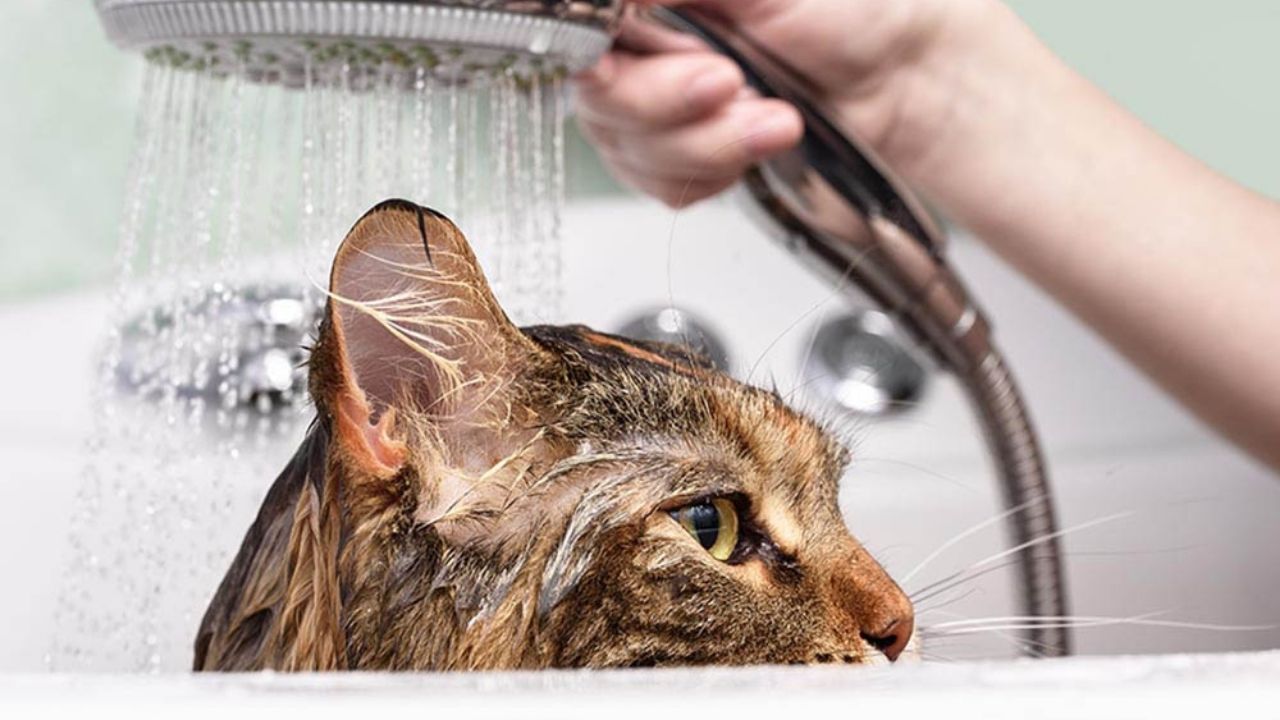Many cat owners often wonder how to wash a cat, how frequently it should be done, and whether it’s even necessary.
Some believe that cats are naturally clean and capable of grooming themselves and that frequent bathing could harm their fur. Others argue that occasional water procedures are beneficial for maintaining their pets’ hygiene and health.
Of course, cats are among the cleanest animals and It is not a secret that most of their waking time excluding the period they spend consuming food and playing, they are grooming themselves. The more the animal moves during the day, the more dedicated it is to grooming its body fur. Considering this fact, many owners wonder: do domestic cats require bathing if the animal never leaves the house?
Do cats need to be washed?
Unlike dogs, who simply adore water procedures, cats do not like water, so bathing is stressful for them. It is necessary to know how to wash a cat correctly so that it does not become a local disaster for all participants in the process.
It is absolutely necessary to bathe your pet if it has been walking outside, or, for example, if you are preparing it for an exhibition – the condition of the fur is assessed closely there. In addition, not all cats are ideally clean, over time the fur gets dirty and an unpleasant smell may even appear.
Indications for bathing:
- Presence of ectoparasites on the fur.
- Severe contamination of the coat.
- For preventive purposes.
How often should you wash your cat?
During the period of shedding, some cats pay more attention to their fur and groom them most elaborately. However, bathing speeds up the removal of dead fur, as mechanical manipulations and water wash away hairs well. At this stage, the question may arise: how often should you wash your cat? There is no clear answer to this, but several factors must be taken into account:
- General condition of the animal.
- How does a cat perceive the bathing process, and do water procedures cause severe stress?
- The breed of animal.
There are no contraindications to taking water procedures during shedding for “plush”, long-haired breeds or short-haired healthy cats with normal, thick undercoats. The exceptions are Rex cats, some Orientals, and representatives of the Siamese variety.
How often we wash a cat depends on how dirty its fur is. It is not advised to wash your pet more than 5-6 times a year, according to veterinarians. Pets who don’t go to exhibitions can be bathed 2- 3 times a year to avoid washing off the layer on the surface of the fur.
Representatives of long-haired breeds need bathing more often than their short-haired counterparts. For preventive purposes or if fleas have appeared, you need to wash the animal a few days before the planned treatment with special medications.
Bath training
To prevent the cat from experiencing stress during water procedures, it is necessary to accustom it to them gradually, starting from an early age. Bathing kittens is not recommended until their milk teeth have completely changed. You can start accustoming babies to water by washing their paws.
The first time you can bathe a kitten is two to three weeks after the change of teeth. During this time, the animal will fully adapt to the new conditions and will trust its owner. Babies are not as clean as adult animals and can get dirty, given their inquisitive nature. Therefore, how often we wash a cat at an early age depends on the degree of contamination of its fur; it is important to take into account the peculiarities of washing a kitten
How to wash cats properly
- It is recommended to leave the animal in the bathtub only after stripping the tub of anything the animal can get a hold of and shutting all the windows in the apartment to prevent drafts. Ensure you have shampoo with you as well as a small towel. If possible, shut the bathroom door and regulate the amount and heat of the water to the right so that you can then put the animal in the bathtub.
- You should also ensure that the water is not too hot or too cold the water temperature should be 35 degrees Celsius. Hot or cold water will also be disadvantageous in a way that it might be uncomfortable or even scare the pet. Put a little water into the bathtub and put the pet into it.
- If you do not want the animal to scratch or claw you it is advisable to pick the animal by the scruff and put him/her into the bath. Then you have to really soak the fur but make sure the water doesn’t get into the ears, the nostrils, or the eyes.
- Wet their fur with water and massage the shampoo into it gently with your hands while saying soothing things to the animal. You can use a soft washcloth. The most suitable method to wash your pet is using a shower hose, but this should not be under high pressure.
- In most cases, apply the shampoo at least twice, but, be careful not to overapply this product. Let’s underline the fact that the coat must be rinsed well and all the shampoo remains to be washed out.
- After finishing the water procedures, you need to wipe the animal with a towel and, if the pet is not afraid of a hair dryer, use it to speed up drying.
How to wash a cat
Not all owners know what to wash a cat with, and they often use unsuitable products for this purpose: their soap or shampoo. The listed products cannot be used, as the acid-base balance in people and animals differ; human hygiene products can cause skin lesions, allergies, and deterioration in the animal’s fur and its condition in general. It is just as a result of this that your cat’s skin becomes so dry or perhaps rough in a manner that even the softness of its fur or its fluffy nature turns as hard as a bone, thus causing the appearance of dandruff. The following factors come into play while selecting the shampoo for an animal: the breed of the animal, the type of its fur, and its color.
Types of shampoos for cats:
- Dry, in powder form.
- Liquid.
- Shampoo sprays.
If you own a long-haired breed or the animal is afraid of water, using dry shampoo is a perfect decision. It is rubbed on the fur, and within a few minutes, you can begin brushing the animal. Dry shampoos are suitable for frequent use and clean the fur no worse than liquid ones, perfectly coping with heavy dirt.
Spray shampoos are a new product on the pet market, but they are also easy to use, clean the fur well, make it easier to comb, add shine, and have an antistatic effect.
More effective are specialized liquid shampoos, which cope well with even the most severe dirt and make the fur soft, shiny, and very pleasant to the touch. In addition, washing products make combing easier, and if necessary, you can buy anti-flea shampoos or shampoos designed for a specific breed or color of fur.








